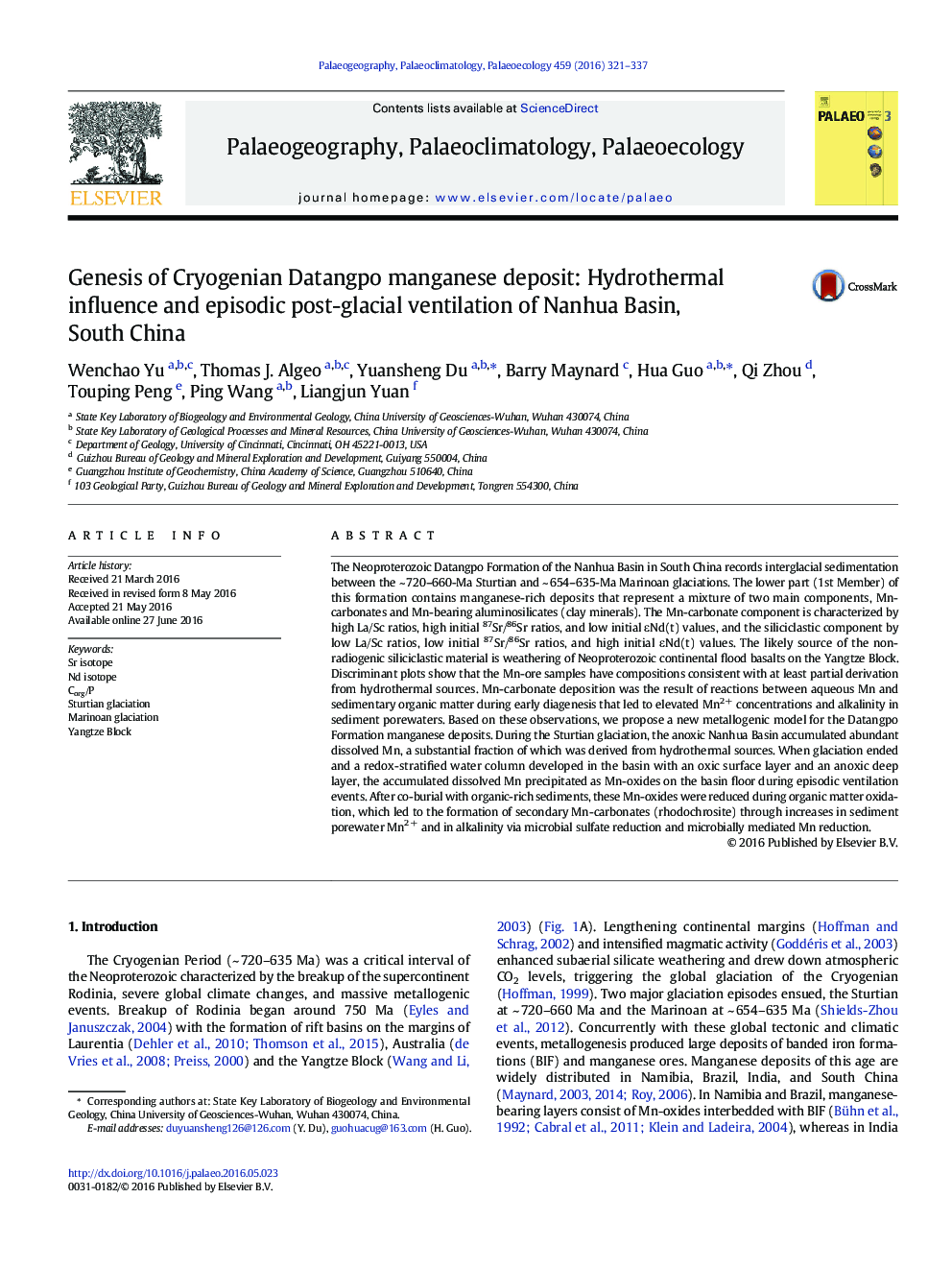| Article ID | Journal | Published Year | Pages | File Type |
|---|---|---|---|---|
| 4465639 | Palaeogeography, Palaeoclimatology, Palaeoecology | 2016 | 17 Pages |
•New elemental and SrNd isotope data from Cryogenian Datangpo manganese deposit, Guizhou, China•The two main components of the Mn-ore deposit are Mn-carbonates and Mn-bearing aluminosilicates.•Mn-carbonates formed by reaction of hydrothermally sourced Mn and sedimentary organic matter•Aluminosilicates derived from weathering of Neoproterozoic continental basalts on Yangtze Block•The Datangpo Mn deposit conforms to the “episodic ventilation” model of metallogenesis.
The Neoproterozoic Datangpo Formation of the Nanhua Basin in South China records interglacial sedimentation between the ~ 720–660-Ma Sturtian and ~ 654–635-Ma Marinoan glaciations. The lower part (1st Member) of this formation contains manganese-rich deposits that represent a mixture of two main components, Mn-carbonates and Mn-bearing aluminosilicates (clay minerals). The Mn-carbonate component is characterized by high La/Sc ratios, high initial 87Sr/86Sr ratios, and low initial εNd(t) values, and the siliciclastic component by low La/Sc ratios, low initial 87Sr/86Sr ratios, and high initial εNd(t) values. The likely source of the non-radiogenic siliciclastic material is weathering of Neoproterozoic continental flood basalts on the Yangtze Block. Discriminant plots show that the Mn-ore samples have compositions consistent with at least partial derivation from hydrothermal sources. Mn-carbonate deposition was the result of reactions between aqueous Mn and sedimentary organic matter during early diagenesis that led to elevated Mn2 + concentrations and alkalinity in sediment porewaters. Based on these observations, we propose a new metallogenic model for the Datangpo Formation manganese deposits. During the Sturtian glaciation, the anoxic Nanhua Basin accumulated abundant dissolved Mn, a substantial fraction of which was derived from hydrothermal sources. When glaciation ended and a redox-stratified water column developed in the basin with an oxic surface layer and an anoxic deep layer, the accumulated dissolved Mn precipitated as Mn-oxides on the basin floor during episodic ventilation events. After co-burial with organic-rich sediments, these Mn-oxides were reduced during organic matter oxidation, which led to the formation of secondary Mn-carbonates (rhodochrosite) through increases in sediment porewater Mn2 + and in alkalinity via microbial sulfate reduction and microbially mediated Mn reduction.
